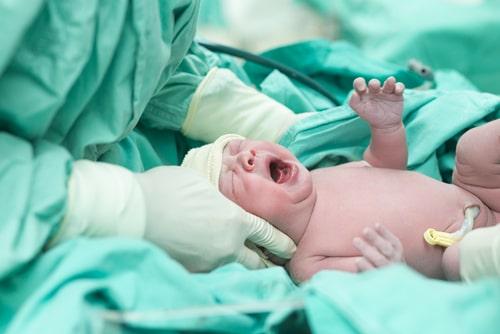Chicago, IL 60601
FREE CONSULTATIONS 312-462-4200
TOLL FREE 833-462-4200
Recent Blog Posts
Addressing the Educational Needs of Children With Birth Injuries
 Birth injuries can have a profound impact on a child's life. Depending on the types of injuries suffered, children may experience developmental issues, or they may suffer from disabilities that can affect their physical and cognitive abilities. Cerebral palsy is a developmental disorder that can affect children who suffer brain injuries during childbirth, and it can impact multiple aspects of a child’s life. Other types of injuries can also place limitations on a child, resulting in long-term disabilities that may require special educational support as the child grows and develops. Parents will want to understand the resources available to them in these situations, and they can take steps to ensure that their children will be able to pursue opportunities for learning and development.
Birth injuries can have a profound impact on a child's life. Depending on the types of injuries suffered, children may experience developmental issues, or they may suffer from disabilities that can affect their physical and cognitive abilities. Cerebral palsy is a developmental disorder that can affect children who suffer brain injuries during childbirth, and it can impact multiple aspects of a child’s life. Other types of injuries can also place limitations on a child, resulting in long-term disabilities that may require special educational support as the child grows and develops. Parents will want to understand the resources available to them in these situations, and they can take steps to ensure that their children will be able to pursue opportunities for learning and development.
Educational Rights for Children With Birth Injuries
Children who suffer from disabilities related to birth injuries are entitled to receive appropriate educational services, and they have rights under federal law. The Individuals with Disabilities Education Act (IDEA) ensures that children who suffer from disabilities will have access to public education.
What Long-Term Effects Can Birth Injuries Have on Children?
 There are a variety of complications that can arise during pregnancy, labor, and delivery, and children may experience multiple types of birth injuries. These injuries can result in medical conditions that can impact a child’s physical, cognitive, and emotional development, and a child may require ongoing medical treatment and support. It is crucial for parents to understand the potential long-term effects of birth injuries so they can seek appropriate care for their child's needs.
There are a variety of complications that can arise during pregnancy, labor, and delivery, and children may experience multiple types of birth injuries. These injuries can result in medical conditions that can impact a child’s physical, cognitive, and emotional development, and a child may require ongoing medical treatment and support. It is crucial for parents to understand the potential long-term effects of birth injuries so they can seek appropriate care for their child's needs.
Types of Birth Injuries
There are numerous types of birth injuries that can occur due to complications during labor or delivery. Some of the most common conditions that can result from birth injuries include:
When Can Labor Induction Increase the Risks of Birth Injuries?
 Childbirth is a natural process that usually progresses on its own. However, there are instances when medical intervention becomes necessary to ensure the safety of both the mother and the baby. One common intervention is labor induction, which involves the use of medications or other methods to stimulate contractions and initiate labor. Labor induction can be a lifesaving procedure in certain situations, or it may be used to speed delivery and avoid complications that may occur during extended labor. However, it is important to understand that labor induction also carries some risks, including an increased likelihood of certain types of birth injuries.
Childbirth is a natural process that usually progresses on its own. However, there are instances when medical intervention becomes necessary to ensure the safety of both the mother and the baby. One common intervention is labor induction, which involves the use of medications or other methods to stimulate contractions and initiate labor. Labor induction can be a lifesaving procedure in certain situations, or it may be used to speed delivery and avoid complications that may occur during extended labor. However, it is important to understand that labor induction also carries some risks, including an increased likelihood of certain types of birth injuries.
What Is Labor Induction?
In some cases, doctors or other medical professionals may take steps to artificially initiate labor before it begins spontaneously. This type of intervention is typically recommended when there are concerns about the health of the mother or the baby or when the pregnancy has gone past the due date. The most common method of labor induction involves the administration of synthetic hormones, such as Pitocin, to stimulate uterine contractions. Other methods, such as breaking the amniotic sac or using prostaglandin medications to “ripen” the cervix, may also be used.
Are Black Women in the U.S. More Likely to Die During Childbirth?
 The healthcare system in the United States is often considered to be among the best in the world. However, despite the quality of medical treatment provided to many patients, there are some areas where the system fails to prevent serious injuries or deaths. One of the most concerning issues involves the rate of maternal mortality. Women in the U.S. die during childbirth or within the first year after a child is born at a much higher rate than in other similar countries. Despite continuing advancements in medical science, the rate of maternal deaths has increased from year to year.
The healthcare system in the United States is often considered to be among the best in the world. However, despite the quality of medical treatment provided to many patients, there are some areas where the system fails to prevent serious injuries or deaths. One of the most concerning issues involves the rate of maternal mortality. Women in the U.S. die during childbirth or within the first year after a child is born at a much higher rate than in other similar countries. Despite continuing advancements in medical science, the rate of maternal deaths has increased from year to year.
Between 2018 and 2021, the rate of maternal deaths per 100,000 live births increased from 17.4 to 32.9. However, Black women are much more likely to die during childbirth than women of other races. In fact, the maternal mortality rate for Black women is around 2.6 times higher than that of white women, and in 2021, 69.9 Black mothers died for every 100,000 live births.
How Common Are Vaginal Lacerations During Childbirth?
 Childbirth is a natural and beautiful process, but it can also be physically demanding, and it can potentially result in injuries that may affect a mother or child. Vaginal lacerations are one common type of maternal injury that can occur during childbirth. These injuries, which are also referred to as vaginal tearing or perineal lacerations, may involve tears or cuts that can occur in the vaginal tissue, labia, perineum (the area between the vagina and the anus), or cervix. By understanding the types of vaginal lacerations that can occur, the treatments that may be provided for these injuries, and the steps that can be taken to minimize the risks of serious tearing, mothers can address concerns about birth injuries and ensure that they are receiving the proper medical care.
Childbirth is a natural and beautiful process, but it can also be physically demanding, and it can potentially result in injuries that may affect a mother or child. Vaginal lacerations are one common type of maternal injury that can occur during childbirth. These injuries, which are also referred to as vaginal tearing or perineal lacerations, may involve tears or cuts that can occur in the vaginal tissue, labia, perineum (the area between the vagina and the anus), or cervix. By understanding the types of vaginal lacerations that can occur, the treatments that may be provided for these injuries, and the steps that can be taken to minimize the risks of serious tearing, mothers can address concerns about birth injuries and ensure that they are receiving the proper medical care.
Types of Vaginal Lacerations
Vaginal lacerations are classified into four categories, ranging from mild to severe:
New Blood Test May Help Identify Preeclampsia in Pregnant Women
 There are a variety of issues that may arise during pregnancy that could threaten the health of both the child and the mother. Preeclampsia is one serious pregnancy complication that can lead to devastating consequences, including seizures, organ damage, or even death in some cases. It is characterized by high blood pressure during pregnancy, and it may occur even if a mother did not have any previous heart conditions or health issues related to blood pressure. Pregnant women with preeclampsia are at an increased risk of stroke, preterm birth, stillbirth, or infant death after birth. Fortunately, a new blood test may be able to help doctors detect this condition earlier so they can provide better care for their patients.
There are a variety of issues that may arise during pregnancy that could threaten the health of both the child and the mother. Preeclampsia is one serious pregnancy complication that can lead to devastating consequences, including seizures, organ damage, or even death in some cases. It is characterized by high blood pressure during pregnancy, and it may occur even if a mother did not have any previous heart conditions or health issues related to blood pressure. Pregnant women with preeclampsia are at an increased risk of stroke, preterm birth, stillbirth, or infant death after birth. Fortunately, a new blood test may be able to help doctors detect this condition earlier so they can provide better care for their patients.
What Does Neonatal Hypoxic-Ischemic Encephalopathy Do to the Brain?
 Parents will want to make sure their children are safe and healthy at all times, but unfortunately, birth injuries can have a significant impact on a child's health and well-being. In some cases, these injuries may lead to permanent disabilities or health issues that may affect a child for the rest of their life. Hypoxic-ischemic encephalopathy (HIE) is one of the most serious birth injuries that can occur, and it can lead to cerebral palsy or other serious conditions. Parents will need to understand how HIE can affect a child's brain, the treatments that may be used to address this condition, and the ways they can ensure that their child receives the proper care in the years to come.
Parents will want to make sure their children are safe and healthy at all times, but unfortunately, birth injuries can have a significant impact on a child's health and well-being. In some cases, these injuries may lead to permanent disabilities or health issues that may affect a child for the rest of their life. Hypoxic-ischemic encephalopathy (HIE) is one of the most serious birth injuries that can occur, and it can lead to cerebral palsy or other serious conditions. Parents will need to understand how HIE can affect a child's brain, the treatments that may be used to address this condition, and the ways they can ensure that their child receives the proper care in the years to come.
Understanding Neonatal Hypoxic-Ischemic Encephalopathy
Neonatal HIE is a condition that can occur during childbirth if the child experiences a lack of oxygen to the brain. Complications during pregnancy or birth may affect a child's ability to receive sufficient oxygen, and these may include high blood pressure during pregnancy (preeclampsia), infections, or issues that affect the flow of blood and oxygen in the placenta or umbilical cord.
What Are the Symptoms of Brachial Plexus Injuries for Newborns?
 Every parent wants their child to be healthy and happy, but a child's health and well-being may be affected by injuries that occur during childbirth. These may include brachial plexus injuries, which can affect the nerves in the neck and shoulders. Damage to these nerves during labor and delivery can result in conditions such as Erb's palsy, which may affect a child's ability to move their shoulder or upper arm. Parents will need to understand how to recognize the symptoms of brachial plexus injuries while also being aware of the steps they can take to ensure that a child receives the proper care and treatment.
Every parent wants their child to be healthy and happy, but a child's health and well-being may be affected by injuries that occur during childbirth. These may include brachial plexus injuries, which can affect the nerves in the neck and shoulders. Damage to these nerves during labor and delivery can result in conditions such as Erb's palsy, which may affect a child's ability to move their shoulder or upper arm. Parents will need to understand how to recognize the symptoms of brachial plexus injuries while also being aware of the steps they can take to ensure that a child receives the proper care and treatment.
Signs and Symptoms of Nerve Damage in the Neck and Shoulders
There are a variety of reasons why the nerves in a child's neck and shoulders may be damaged during birth. Shoulder dystocia, which occurs when pressure is placed on the child's arms or shoulders as they move through the birth canal, can result in multiple forms of nerve damage. Nerves may become stretched (neurapraxia), affecting their ability to send signals to and from different parts of the arm. In other cases, nerves may be torn or become separated from the spinal cord (avulsion), resulting in loss of sensation, mobility, or paralysis.
New Mothers Are at Risk of Injury Within the First Year After Birth
 Even though the process of pregnancy and childbirth is experienced by women all over the world, it can still be risky for mothers. Various maternal injuries can occur during pregnancy, labor, delivery, and in the months following a child's birth. While medical professionals are often focused on addressing complications that occur during pregnancy and responding to issues that affect mothers during and immediately after delivery, recent research has found that many mothers continue to be affected by health concerns within the first year after a child is born. In fact, only around one-third of maternal deaths occur during pregnancy or delivery. One-third of deaths take place within six weeks after delivery, and another 30 percent of deaths occur between six weeks and one year. For every death that occurs, between 50 and 100 mothers suffer from serious complications that lead to long-term health issues.
Even though the process of pregnancy and childbirth is experienced by women all over the world, it can still be risky for mothers. Various maternal injuries can occur during pregnancy, labor, delivery, and in the months following a child's birth. While medical professionals are often focused on addressing complications that occur during pregnancy and responding to issues that affect mothers during and immediately after delivery, recent research has found that many mothers continue to be affected by health concerns within the first year after a child is born. In fact, only around one-third of maternal deaths occur during pregnancy or delivery. One-third of deaths take place within six weeks after delivery, and another 30 percent of deaths occur between six weeks and one year. For every death that occurs, between 50 and 100 mothers suffer from serious complications that lead to long-term health issues.
UPDATE: Can Birth Injuries Lead to Hearing Loss for Children?
 Originally published: September 11, 2020 -- Updated: June 5, 2023
Originally published: September 11, 2020 -- Updated: June 5, 2023
Update: In addition to considering the potential causes of hearing loss for infants, parents will also need to understand the types of treatment that may be needed to address this issue and ensure that their child can grow and develop successfully while living a fulfilling life. The expenses related to hearing loss treatment can be significant, and parents may need to look at what forms of assistance may be available following a birth injury to ensure that they will be able to provide for their child’s needs.
For children with hearing loss, early intervention can be crucial. Ideally, a child can begin receiving services within the first six months after they are born. These services may evaluate the extent of their hearing loss and determine how to support the development of language and communication skills. By beginning treatment as early as possible, parents can provide their child and their family with the tools for ongoing success.





